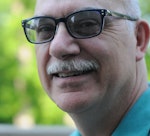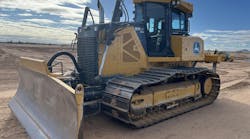When Miller Bros. Construction decided it needed to change its equipment focus from an operations-driven model to a data-driven asset-management model, it created a new position: VP equipment. In 2021, it chose Jon Kaye for that role.
Kaye, a member of the Construction Equipment Under 40 Class of 2023, brought with him a proven record in process improvement honed during his career at HERC. Those who know Kaye point not only to his understanding of how to implement change, but also to his ability to manage people through the process.
I talked with Kaye about the delicate balance of bringing change to an organization without damaging the relationships within it.
Read also: Jon Kaye applies process improvement to Miller Bros. fleet
Sutton: What was Miller Bros. looking to do when they started looking for your position, and how did you fit that bill?
Kaye: They were looking for that higher level voice within their executive team. They wanted someone that can dive into the data and say, “Are we truly running as efficient as possible. Are we utilizing our capital spend as efficiently as possible. And if not, then how do we start improving the operation.”
Obviously, change doesn’t happen overnight. Let’s get a list of things that we know we’re inefficient at, or a better way to say it is, we know we can do better.
I talked to our team, down to the mechanics and drivers. “What are things that bother you? What are the things that you just know could be better?” At first, they’d be a little shy. Then they rattle off a couple of things. We start finding these nuggets. You start realizing it might seem like something this small, but when you multiply it in an organization our size, or you watch that little small nugget as it flows up the process, and we start picking off a couple of little things. We start making quick improvements.
Sutton: There’s a tension between young managers who are analytically inclined, and older managers who have come up through the wrench-turning side of the business. What are some things that you have learned?
Kaye: I look at myself. I’m not an equipment manager. I don't think my equipment manager is an equipment manager. We’re all people managers. So it’s building those relationships and getting that trust level up. And it’s not easy, and it doesn’t happen overnight.
There’s always a hierarchy, but it’s more “We're going to win this together.” We all hold different pieces of the puzzle. So I told the mechanics, “I expect you guys to be the best wrench turners you can be and provide the feedback to the next guy. And if you’re the maintenance manager, you need to be the best maintenance manager you can be.” And if we’re all the best we can be, that’s what drives the team. It takes a little while for people to see results. But if they start seeing thing move, even small things, they start realizing this can work and we can do it.
Sutton: How are you preparing the next generation, not only to fill your spot, but also the spots under you?
Kaye: It’s a difficult question—but I think other equipment managers will resonate with that— because a lot of organizations, even when you work for a good size contractor like Miller Bros., they’re still small organization on the equipment side.
It’s hard to say, “We want to bring someone on the team that we’re going to train them to be the next equipment manager,” because you can’t have that extra head.
We’ve looked at the team and said, “Who do we think is the right fit and how do we start developing them, even informally?” We start to pepper in additional responsibilities or changing responsibilities and saying, “Hey, we really want to work on this because we think you can help us drive it.”
If you don’t know what your people want to do, then you can’t guide that conversation, so ask them. If you have 10 mechanics, maybe only two or three of them would raise their hand if you said, “Who wants to be a manager?” Then you focus on those guys and find out if it’s possible in reality. And if it’s, “Yes, but they need this training,” then give them that training.
You might think you’re replacing that guy in five years, but he has a different plan. He’s going somewhere else, and we need to have someone that can step into that role much sooner.
So my message to anyone would be starting as soon as you can. Start now, developing your people.





